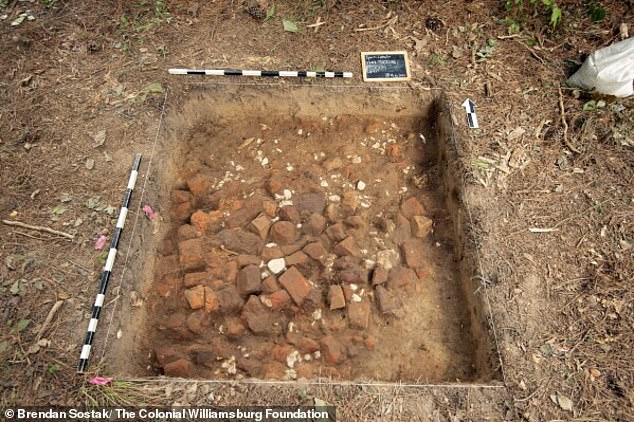Archaeologists have unearthed lost remains of early American soldiers from the Revolutionary War.
They discovered bricks that were once part of Virginia’s first military barracks that housed 2,000 people between 1776 and 1777 in what is now Colonial Williamsburg.
At the time, the United States was in the midst of a war for independence from the British that ended in 1781, five years after the United States declared its freedom.
The team also found personal items belonging to patriot troops, including lead shot, buttons and a 225-year-old Virginia penny, as well as fireplaces and campfires.
This discovery will provide insight into Williamsburg’s military involvement during the Revolutionary War, which these artifacts will help tell.
Images from the site showed red bricks buried in the earth, in the same place where they were demolished hundreds of years ago by the British army.
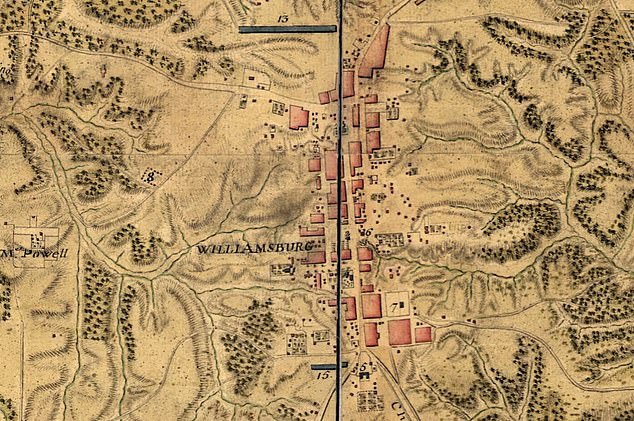
An 18th-century French map of Williamsburg shows more than a dozen barracks within Williamsburg and details how they were built between 1776 and 1777 for the Continental Army as it fought the British.
Ashley McCuistion, lead archaeologist, said The Washington PostThese barracks were the first continental barracks in Virginia.
“All this happens immediately after independence is declared and we begin to form this American government.”
The barracks were also built on land used by the British royal governor, who had a palace built for himself.
But American soldiers took over the palace and grounds, turning it into their military outpost with capacity for thousands of people and 100 horses.
The team first found piles of red bricks buried beneath the surface, stacked in rows.
The barracks were destroyed by the forces of British General Charles Cornwallis in 1781.
Cornwallis is best known for his surrender at the Siege of Yorktown in 1781, which effectively ended the war and led to peace negotiations between Britain and the United States.
American soldiers recounted the incident years later, saying they were forced to abandon the area when British troops marched toward Yorktown.
Continental Army soldier Spencer Davis gave a written account in the early 1880s, stating that the enemy appeared at night and “attacked our barracks.”
“There was some minor fighting and two of my acquaintances… (were killed),” he continued.
‘The Americans retreated about nine miles that night and saw light from the barracks fire.’
The Patriot Army stationed at Colonial Williamsburg was led by C.apttain David Humphrey, a close friend of George Washington.
Archaeologists have been working at the site since the summer of 2023, but announced their discoveries last May.
“This site, which was occupied from 1777 to 1781, is particularly valuable as it was built and used for only one purpose,” reads Colonial Williamsburg’s official website.
‘Moreover, a significant part of the site has remained virtually intact since the barracks were destroyed.’
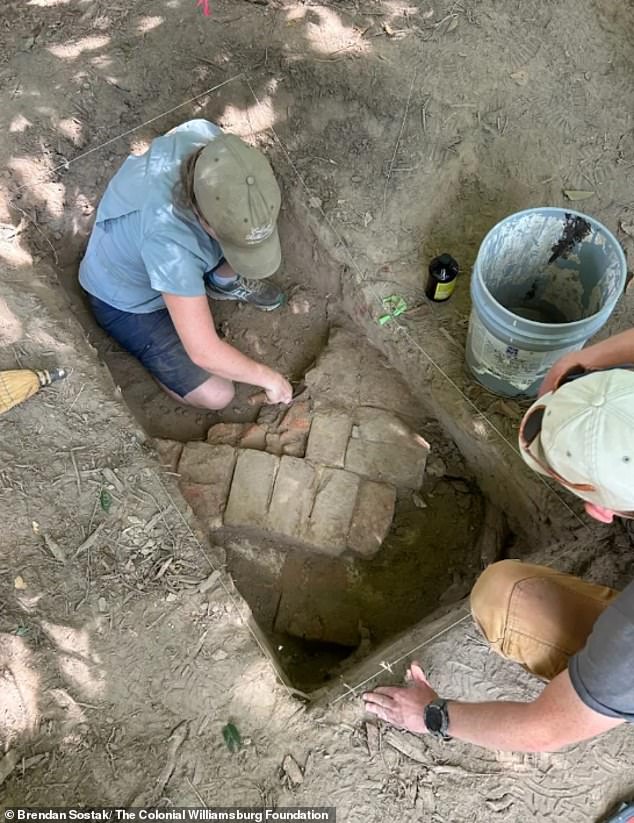
The housing units, located in Colonial Williamsburg, were built around 1776 but later destroyed by the forces of British General Charles Cornwallis in 1781.
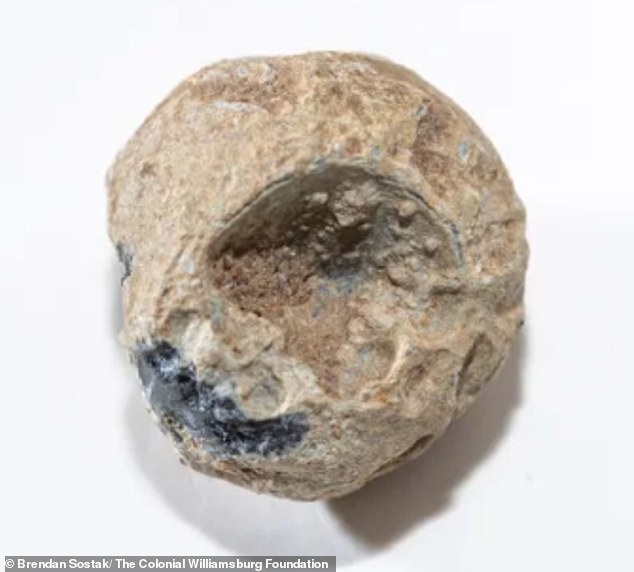
A lead pellet with a bullet mark was found. The soldiers chewed the pellets for their sweet taste.
The barracks site is estimated to be approximately three to four acres in size. Currently, only a small percentage of the site has been excavated.
The team also discovered personal items of the American soldiers, including a metal military belt that has since been worn away by the elements.
Also found at the scene was a blue glass button, still shiny as if newly made, and a small musket ball.
The tooth mark on the lead shot was left by a soldier biting into it because of its sweet taste: it was a common practice among the military.
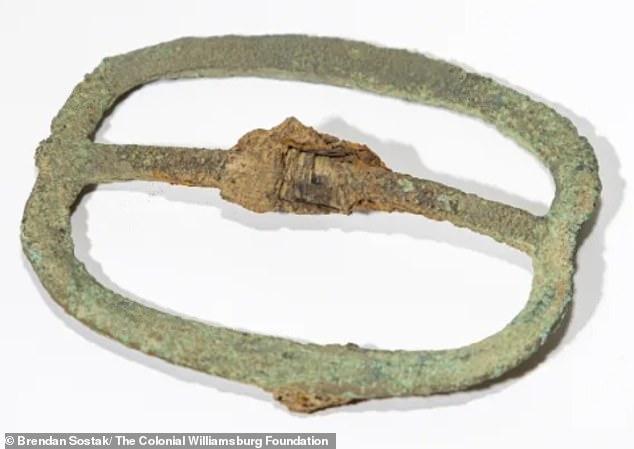
The team also discovered personal items belonging to American soldiers, including a metal military belt that has since been worn away by the elements.
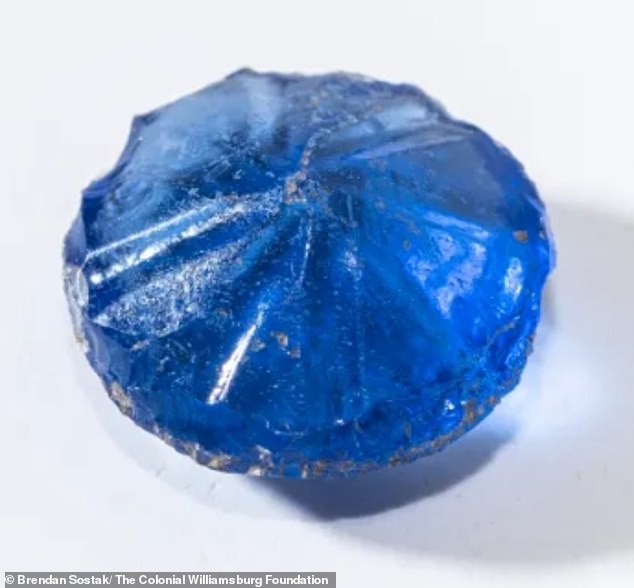
A blue glass button was found, still shining as if it had been newly made.
Jack Gary, executive director of archaeology at Colonial Williamsburg, said: ‘We have horseshoes.
‘We also have this object here that is a bit, that is, it is part of a horse bit that goes in the mouth to control the horse.
‘And this object that appears here is part of a comb for brushing the horse’s coat.’
‘Here at Colonial Williamsburg, we interpret the American Revolution and the politics that preceded it, and many of the events that preceded it.
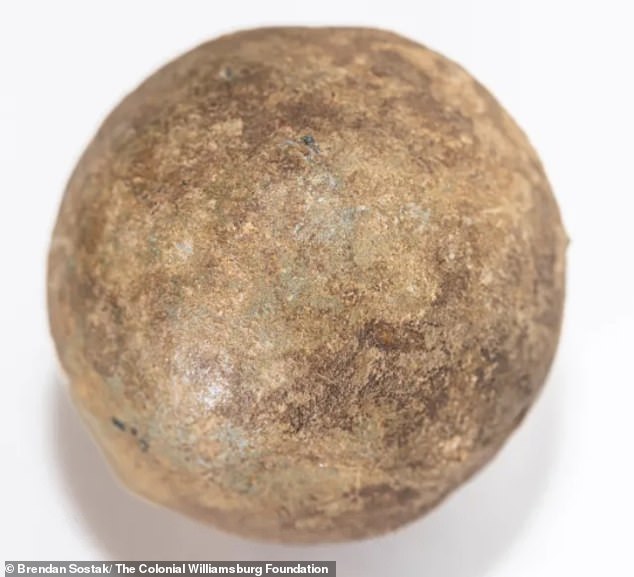
Small pieces of weapons were also found during the excavation.
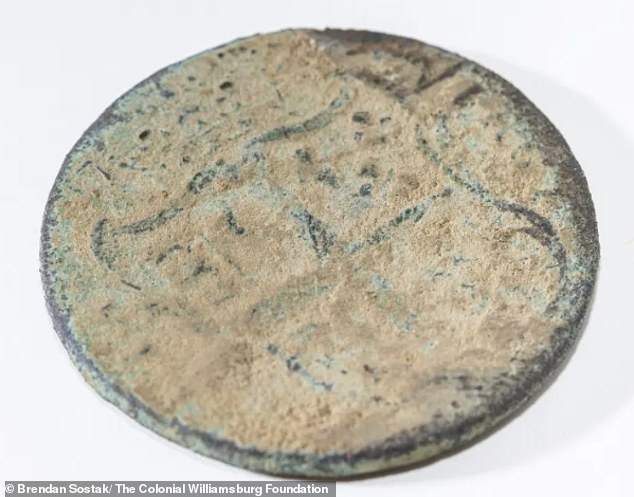
A 250-year-old Virginia halfpenny was also found in the ground.
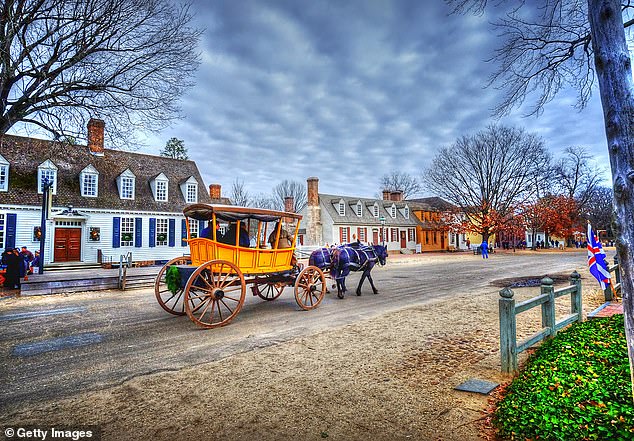
Williamsburg was founded as the capital of the Virginia Colony in 1699 and was one of the first planned cities in the United States. The original capital, Jamestown, was the first permanent English-speaking settlement in the New World, founded in 1607.
‘But we don’t have many sites that tell us what really happened during the war, and this site does.
“It gives us an insight into the daily life of an ordinary soldier. It also tells us what life was like for officers.”
Williamsburg was founded as the capital of the Virginia Colony in 1699 and was one of the first planned cities in the United States.
The original capital, Jamestown, was the first permanent English-speaking settlement in the New World, founded in 1607.

